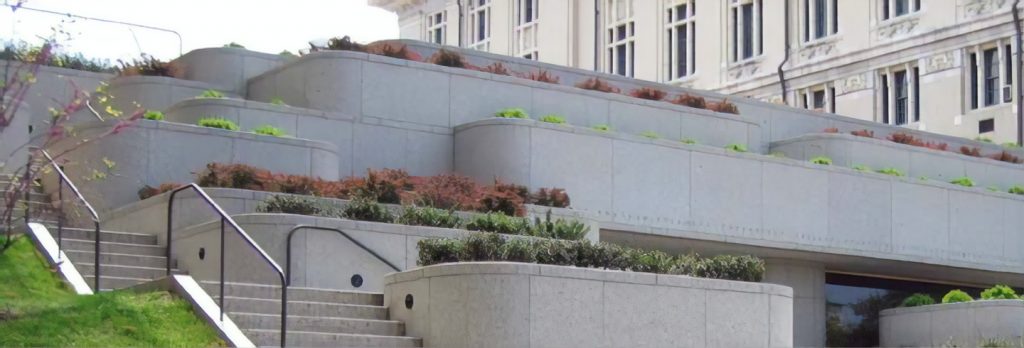Carnegie Mellon Library
Precious Art and Book Collection Finds Sustainable, Secure Home Under Green Roof
ROOFING CHALLENGE: Carnegie Mellon University’s Posner Collection of rare art and books had for years been stored in a remote library location. Thanks to a donation by the Posner family, the university was able to create a new location to house Henry Posner, Sr.’s collection, which includes one of the four remaining original copies of the Bill of Rights. When it came time to consider how to exhibit this collection, project planners had an epiphany: why not pick a location that could incorporate many environmentally sustainable features as well? Architects were on a mission to find a way to create an environmentally friendly location that could protect one of the top five privately held collections in the world.
PVC (VINYL) SOLUTION
The University’s desire to integrate green space into the chosen construction site, a high-traffic campus crossroads, led architects to design an 11,400-square-foot, one-story subterranean building carved out of a hillside. The structure would quite literally be buried between two large classroom buildings and feature at surface level a vegetative roof to satisfy the University’s landscape plan.
The Posner family approved of the green roof, provided it never leak. In response, architects identified a roofing material especially suitable for waterproofing and supporting green roofs – vinyl. Construction plans for the Posner Center involved adhering an 80-mil, G-476 Sarnafil membrane on top of the building’s concrete roof deck and portions of its vertical side walls. A protection layer, a drainage panel and insulation were then installed over the membrane.
The finished product not only became a landmark for campus students, but was also LEED-certified by the U.S. Green Building Council for its sustainable attributes. With ample gallery space, a state-of-the-art conference center and a beautiful rooftop garden, the 1,000-volume Posner Collection today has found a home that is secure, sustainable and appealing to the eye.


